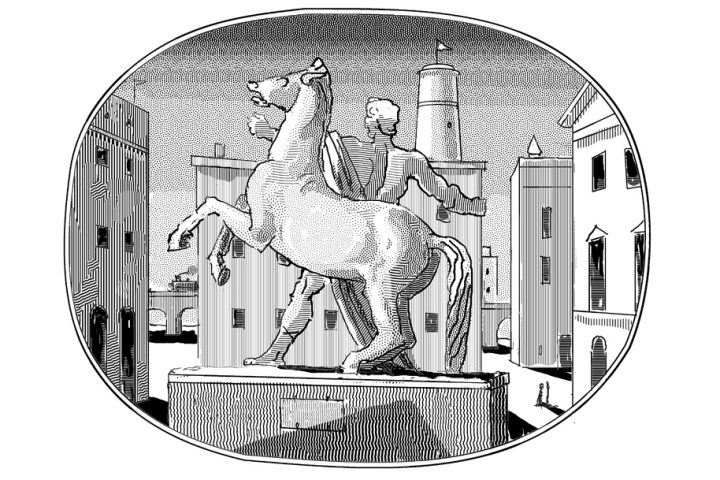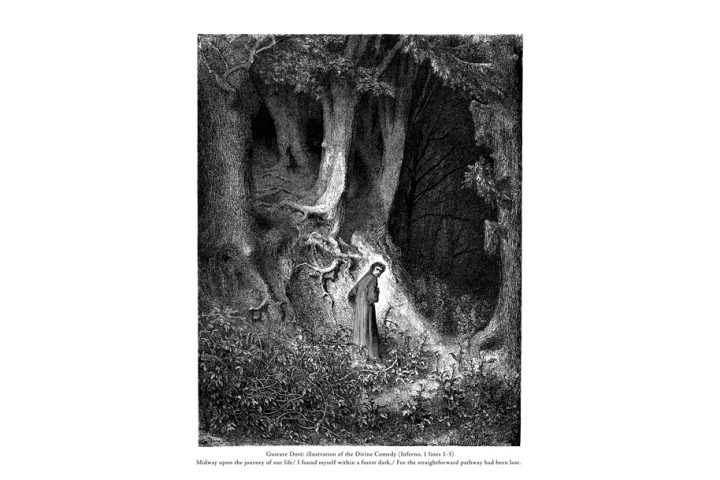Books Reviewed
Years ago, in the 1960s, I was a regular in the reading room of the Italian Central State Archives in Rome. Exciting times. We were the first generation of scholars to be given access to the actual documents of the fascist state. Up till then, historians of il Duce’s 20-year tyranny had to rely on autobiographies and other recollections, sometimes in the form of interviews. Italian historian Renzo De Felice had just started to publish his monumental four-volume biography, Mussolini (1965-97), based on the documents we were studying, and others from private archives and those in ministerial collections.
There was exceptionally good camaraderie. We were understandably excited to be among the first to get our hands, and minds, on the real stuff, and since there were very few of us—perhaps a dozen or so, Italians and foreigners—we were able to keep track of research breakthroughs, which came at a rapid tempo. Bit by bit we reconstructed the thing.
My work, which became a doctoral thesis at the University of Wisconsin and then a book, Universal Fascism (1972), had to do with the efforts to create a fascist “international,” mostly in the years before Hitler seized power in Germany in 1933. This focus enabled me to look at various national fascisms, most of which were free of the racist, anti-Semitic overlay the Führer ultimately imposed on the Axis. By now, there are several books and a fair number of essays about this fascinating and important phenomenon. Which leads us to the subject matter of Paul Gottfried’s excellent study, Fascism: The Career of a Concept: What was fascism all about? And is there a doctrine or ideology that convincingly makes Hitler, Mussolini, and others part of a single system?
Gottfried, a paleoconservative historian who formerly taught at Elizabethtown College, goes through the answers, stressing that they have changed over the years, and reminding us that we don’t necessarily get smarter with the passage of time, even though we certainly gather more information. Some got it right at the time. Here’s the central thesis:
[T]here is a generic fascism, which resembles the Italian fascist movement and, to a lesser extent, the Italian fascist government. This form of fascism shaped the interwar revolutionary Right, which came into vogue in Europe after the First World War. Moreover, fascism has a distant family relation to traditional conservatism but less ideological connection to German Nazism….
[German historian] Ernst Nolte was probably right that fascism belonged to a specific temporal-spatial context and therefore should not be applied to developmental dictatorships all over the globe. It…drew on a European heritage of ideas and built on European social classes and social crises.
So while there is a “generic fascism,” with important Catholic social and political themes, we should limit it both temporally (it was important between the wars, and certainly during World War II) and geographically (Europe, not the whole world). Gottfried is especially valuable when he discusses leftist interpretations. For the most part, Marxist historians and political scientists missed one of fascism’s most significant strengths: its claim to be a revolutionary doctrine. Gottfried understands that a movement, and later a regime, could be reactionary and still appeal to workers, anarchosyndicalists, and even leftist Hegelian philosophers like Giovanni Gentile.
* * *
It’s rare to find a scholar who gives full credit, and even admiration, to those with whom he disagrees, but Gottfried pulls it off magnificently. It’s worth reading Fascism if only to appreciate the great contributions to our historical understanding from A. James Gregor and Nolte. This gives me special pleasure since Gregor and Nolte have long been pariahs of the academic establishment—even to the extent of being accused of harboring fascist sympathies. And here I’m not talking about nut cases like Lyndon Larouche, who has often accused me of similar sentiments; I’m talking about the dons.
Gottfried, like my friend and mentor De Felice (with whom I published a book-length interview in 1976, Fascism: An Informal Introduction to Its Theory and Practice, which devastated the Left’s stereotype and stressed the revolutionary components), rather reluctantly concludes that the differences between Nazism and fascism are so significant that it’s a mistake to try to pack both phenomena into a box labeled “fascism.” And not just because “generic fascism” for most of its history rarely embraced Hitler’s anti-Semitism or his racial doctrines, but also because the whole style of the regimes was so intrinsically different from one case to the other. And here I think Gottfried would have strengthened his argument had he spent a bit more time discussing charismatic leadership, and the relationship between the leader and the masses.
Anyone carefully watching rallies in Hitler’s Germany and Mussolini’s Italy would see that we’re dealing with two different animals. The Hitler crowd is programmed; the well-known cues are coming—everybody will chant “Sieg Heil” and raise the right-hand salute. Many observers realized a good deal of this, especially early on, had to do with the creation of a political religion: the leader conducted the ritual, the masses participated. But the Italian crowd was very different from Hitler’s: the Italians yelled at Mussolini, imploring him to hit on their favorite themes such as the Empire. This was unthinkable in Germany, where an easy rapport with the dictator didn’t exist.
* * *
This line of analysis adds power to Gottfried’s masterly discussion of the death of “totalitarianism” as an explanatory concept that included Soviet tyranny alongside Nazism and fascism. Yes, the USSR was a single-party system with a dictator at the point of the pyramid, but its rituals were not exciting. On the contrary, the tedious lectures from Stalin and his henchmen were monotonous and boring, whereas fascist rallies were occasions for political enthusiasm.
Gottfried rather surprisingly gives insufficient attention to the “new fascist man,” a central theme in both Germany and Italy. According to Hitler and Mussolini, the new man came out of the trenches of the Great War. Men who had proven their valor on the battlefield, and only such men, were truly capable of leading a fascist revolution.
That quibble aside, Paul Gottfried’s is far and away the best book on fascism I’ve read in many years.




